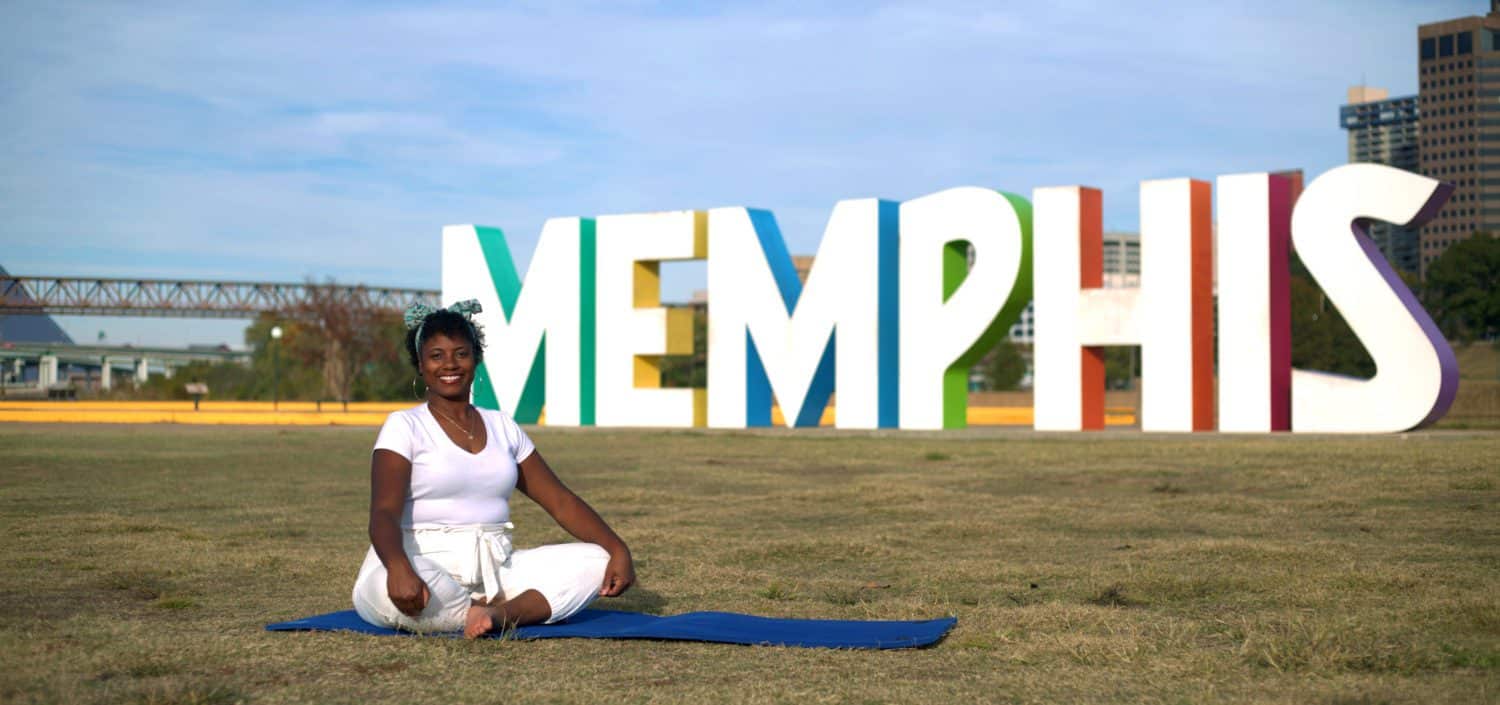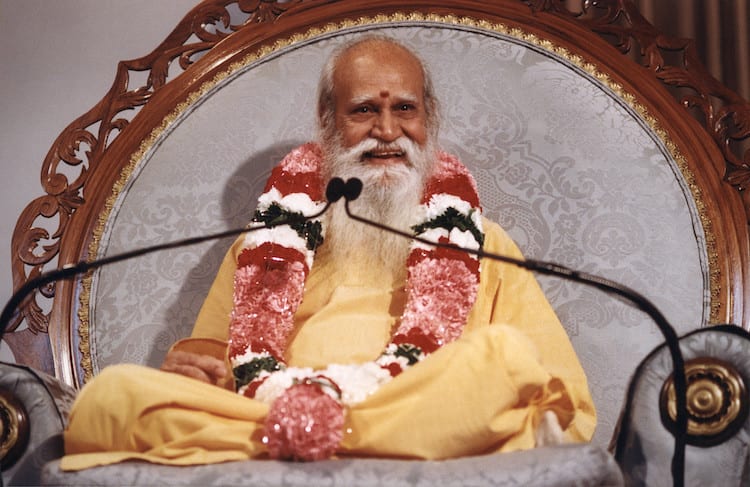The purpose of religion is to trace your roots, to show you where you came from. The “re” stands for “return.” Literally, it means “again” or “back.” There is no need to go somewhere for this experience. It is not a journey into outer space; it is a journey through the inner space. All the answers are within you. Just realize and experience that Truth, which is already there.
Unfortunately, when you try to discuss your true nature or God or Cosmic Consciousness, you find it difficult—anything that you try to say about it becomes nonsense. Only when you are in total silence is there sense. All of philosophy can be summed up by the word ”knowing.” You don’t have to do anything, just know.
That’s why it is called “knowledge”—Self-realization means to know that you are essentially that Spirit or Consciousness or God. Even though the truth is that we are all essentially God, most of us don’t really experience that. That is the problem. If we all experienced it, then there would be no need for religious places, places of prayer, places of worship, Yoga centers. All these things are there to help you realize your own nature.
Now let’s come down to talk on a more practical level. At the ultimate level we are all one, it’s true. But it’s too much for the mind to comprehend. Why? Maybe you are not yet ready. I say this because there are two “I’s.” In our daily life we say, “I know I’m happy,” or “I know that I am going to be in trouble because of this.” Don’t we talk this way? “I know what I am going to do.” There seems to be two personalities inside, two “I’s.” Self and self. Who are those two “I’s” then? You may say that one is the pure, big “I”—the original “I,” the image of that big “I” called God, the big “I am.” Did not God say, “I am that I am”? When Moses asked, “Who are you,” what was the answer? “I am that I am.”
We all seem to call ourselves “I am,” is it not so? When I ask you, “Who are you?,” you will answer, “I am. . .” and your name or your profession or some qualifying words. First you say “I am,” and then some identification follows. “I am Jim.” “I am Joan.” “I am an executive.” “I am a doctor.” “I am a farmer.” “I am a yogi.” Every time you want to identify yourself you begin with this “I am.” The thing we all have in common is “I am.” Those two words represent the big “I,” the pure “I.” The second part – the name or the profession or the other words—represent the limited “i.” You could call it the reflected or egoistic “i.”
The Hindus call these suddhatma and jeevatma. Atma is Self. Suddhatma is the Pure Self. Jeevatma is the individual self, the limited self. It is at the level of the jeevatma that we make differentiations: “I am white, you are black.” “I am fat, you are thin.” “I am Catholic, you are Jewish.” All these differences come at the level of the individual self. But at the higher level —whether black or white, short or tall, young or old, dead or alive—it is all meaningless.
Who Realizes?
What does Self-Realization mean, then? Self realizing itself. Until it realizes itself it has forgotten. If a Self can forget itself, what kind of Self is that? It cannot be that pure, absolute Self. A pure Self is God. Can God forget itself? No. So in the term Self- Realization, the “Self” cannot mean God (the pure Self). Little “i” is not the pure Self wanting to realize itself because that Pure Self never forgets itself. It rests always in the knowledge: “I am the Pure Self.”
Okay. Then what is the self that wants to realize? The little self, or the little “i.” Can the little “i” realize itself and then come and say, “I have realized myself?” No. Because the minute the little self realizes, the ignorance or the darkness is gone, the light has come in. Then the little self is no longer little self; it realizes that it was always big, pure Self. We could simplify that whole problem a little by merely saying it is all in the mind. You may call it ego, but ego also is part of the mind. There are only three things that you identify with as yourself; the true Self, the reflected self (the mind), and then the body that houses both. You can put it that way.
Body, mind, spirit. These are the three things. Intelligence and emotions, are all nothing but mental stuff on different levels. Are crude oil, tar, diesel fuel, and gasoline essentially different? No. They are all one and the same stuff, more or less refined or expanded. In the same way, ice, water, and steam are all essentially the same. Imagine that your spirit is the steam, though that’s a crude analogy. Your mind is liquid, that’s why it runs around. It fluctuates a lot. The body is a solid, the ice. They all came from the same water. You could say they are different densities of the same stuff. Watery spirit becomes mind. Then more solidified, it becomes the body.
A Cage is a Cage
The pure “I,” the absolute “I” is the spirit. The lower “i” or the jeevatma is the mind. Now as we said earlier the pure “I” doesn’t need Self-realization because it is always realized. It never forgets. It is the mind that wants to realize itself.
Now how does the mind function? The mind identifies with various positions. It is your mind that says, “I was a baby. Then I went through some changes. Now I am a woman.” What actually changed? The body. So the mind accepts these changes and identifies itself with the change and says, “I am an adult. I am healthy. I am sick.” The mind should realize its true Self. It should know “I am not all these external things. I am simply using those labels and calling myself by these names.” What we call “i-dentification” is when the ”i” attaches itself to those things, thinks it is that label.
Patanjali gives a beautiful example: Think of an absolutely pure crystal. It doesn’t have any color of its own. However, if you put a chrysanthemum next to the crystal, the crystal will look yellowish. Bring a blue flower, the crystal will look blue. Did the crystal become blue? Can you scrape this blue out of the crystal? No. lt is because of the association with the blue flower that the crystal appears to be blue. Don’t forget that — it appears to be blue. The minute you separate that flower from the crystal, it’s a pure crystal again.
In the same way, your mind is essentially crystal clear. It has no label of its own. But when it associates itself with the body, then it calls itself a man or a woman and so on. If it associates with the weight of the body you say, “I am heavy, l have to watch my weight.” lt is to disassociate yourself from these false identifications that you seek liberation, salvation, moksha. The minute you disassociate yourself from them, you feel wonderful; “Ahhh. I am That.” Without associating myself with anything all I have to say is, “I am that I am.” “I am—that’s all!”
This is spiritual practice, to disassociate yourself. You don’t need to throw out those labels and things. Keep them around you, but don’t identify yourself with them. Use them, but don’t think you have become them. Because you happen to be sitting in an Oldsmobile, do you say, ”I am an Oldsmobile?” If you get a new car, do you say, “Now I am a Chevy?” There is no difference between this and calling yourself “an athlete,” “a man,” “a woman.” You are simply using that form. Until you have liberated yourself from this false identification, you will be bound — no matter how much you talk about this liberation movement or that liberation movement. Without that realization, you are caged, almost like a parrot. Take the parrot from an iron cage, and put it in a gold cage. Do you think the parrot will be happy? Tell your parrot, “You see, now you are in a gold cage, aren’t you happy?” It will say, “My dear friend, a cage is a cage. Whether it’s iron or gold, I am still in a cage.”
Until and unless you totally liberate yourself from all these things, you will be bound. You don’t need to go and hide from everything to attain this freedom. Just know: “I am not bound by all these things. They can never affect me. They are around me, I am simply using them. Anytime l don’t want it, I can just drop it, take something else and use it. They are for my use. They are not there to bind me, to color me. I am always crystal clear, pure. That’s why even when the body dies I don’t die, I am essentially immortal. I am the soul.”
That remembrance should be there always. Then you can use everything around you well. The minute you forget that you are the master using something, the trouble starts. For instance, the minute you forget that you are the person who is writing, using the pen to write, and allow the pen itself to write, you will have a problem. Then it may write whatever it wants and you cannot write what you want. Instead of your handling the pen, the pen handles you. Then you will become a pen handle. Instead, you control the pen. Make it work well for you. Make it a good instrument for your work by keeping it in its proper place with the proper perspective.
That is what we call mastery. You should be the master at all times and of all situations. It may be a happy situation, unhappy situation, pleasurable, painful. Be in control of it. The more you know who you really are, the more that control will come.



